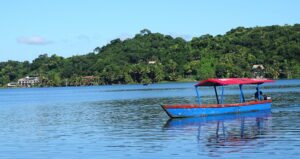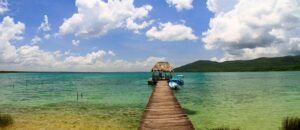
Hydration Packs vs. Water Bottles: Which Is Best for Volcano Hiking in Guatemala?
Staying hydrated is one of the most important parts of hiking, especially when tackling the challenging volcanoes of Guatemala. Whether you’re climbing Acatenango, Pacaya, or Tajumulco, proper hydration keeps you energized and helps prevent altitude sickness. But what’s the best way to carry water? Should you use hydration packs or water bottles? Let’s compare both options and see which one works best for your volcano hiking adventure.
Why Staying Hydrated Matters
Before diving into the comparison, it’s essential to understand why hydration is key. Hiking in Guatemala’s volcanoes means long hours of climbing, often in hot or high-altitude conditions. Losing too much water through sweat can cause dehydration, leading to headaches, dizziness, and fatigue. Having a convenient way to drink water helps you stay strong and avoid serious health issues.
Proper hydration also plays a crucial role in regulating body temperature and maintaining endurance. When you hike at higher elevations, the air becomes drier, and you lose moisture faster through breathing. This makes drinking water even more important to avoid dehydration and altitude sickness. The last thing you want is to feel weak or dizzy when climbing steep trails with loose rocks and uneven surfaces.
Hydration Packs: What Are They?

A hydration pack is a backpack or vest with a built-in water reservoir. A drinking tube runs from the reservoir to your shoulder, allowing you to sip water without stopping. These packs come in different sizes, usually holding 1.5 to 3 liters of water.
Benefits of Hydration Packs for Volcano Hiking
1. Hands-Free Drinking
One of the biggest advantages of hydration packs is that you don’t have to stop hiking to drink water. The tube stays near your mouth, so you can sip water while climbing steep trails. This is especially useful when ascending challenging routes, where stopping to grab a bottle might throw off your rhythm or balance.
2. Larger Water Capacity
Hydration packs usually carry more water than standard bottles. This is especially helpful on long hikes like Acatenango, where you need to stay hydrated for hours. Running out of water halfway through a trek can be dangerous, and a hydration pack reduces the risk of this happening.
3. Even Weight Distribution
Carrying a hydration pack spreads the weight evenly across your back. This makes it easier to move without feeling off-balance, which is important when navigating rocky or steep paths. Uneven weight distribution can lead to discomfort or even injuries, especially on longer treks.
4. Encourages Frequent Hydration
Since drinking from a hydration pack is so easy, hikers tend to sip water more often. Frequent hydration helps prevent dehydration and keeps your energy levels stable throughout the hike. Many hikers don’t drink enough simply because stopping to grab a water bottle feels like an inconvenience.
5. Extra Storage Space
Most hydration packs come with storage compartments for snacks, rain gear, and other hiking essentials. This makes them a great all-in-one solution for volcano hiking. Some even have specialized pockets for items like headlamps, maps, or first aid kits, making them ideal for those who like to stay well-prepared.
Downsides of Hydration Packs
While hydration packs offer many benefits, they do have some drawbacks:
- Harder to Refill: Unlike bottles, refilling a hydration pack takes more time and effort, especially on the trail.
- More Maintenance Required: The tube and reservoir need regular cleaning to prevent bacteria buildup.
- Can Feel Warm on Your Back: Since the pack rests against your back, it can make you feel hotter, especially in warm weather.
- Potential for Leaks: If the reservoir is not properly sealed or gets punctured, it can leak water into your backpack.
- Slightly Heavier: Some hydration packs, especially larger ones, can add extra weight compared to carrying a couple of lightweight bottles.
Water Bottles: A Classic Hydration Option

Water bottles are the traditional choice for carrying water. They come in different sizes, materials, and styles, from lightweight plastic bottles to insulated stainless steel ones.
Benefits of Water Bottles for Volcano Hiking
1. Easy to Refill
Unlike hydration packs, water bottles are quick and simple to refill. If you find a water station or carry a water filter, refilling a bottle takes just a few seconds. This is a big advantage if you’re hiking in areas with access to clean water.
2. Simple to Clean
Cleaning a water bottle is much easier than cleaning a hydration pack. You only need soap and water, and there are no tubes or small parts to worry about. This makes bottles a great choice for hikers who don’t want to deal with extra maintenance.
3. No Risk of Leaks
Hydration packs can sometimes leak if the reservoir isn’t sealed properly. Water bottles, especially those with secure caps, don’t have this issue. There’s less risk of accidentally soaking your backpack or important gear.
4. Keeps Water Cooler Longer
Insulated water bottles keep water cold for hours, which is refreshing when hiking in warm conditions. Hydration packs, on the other hand, can warm up quickly against your back. Having cool water can be a game-changer, especially on sunny trails with little shade.
5. More Durable
High-quality water bottles, especially metal ones, are more durable than hydration packs. They can withstand drops, bumps, and rough handling without breaking.
Downsides of Water Bottles
Despite their benefits, water bottles also have some disadvantages:
- Less Convenient to Drink From: You have to stop hiking, reach for your bottle, and unscrew the cap every time you want a drink.
- Limited Capacity: Most bottles hold 500 ml to 1 liter, meaning you may need to carry multiple bottles for a long hike.
- Uneven Weight Distribution: Carrying multiple bottles in a backpack can cause an uneven load, making hiking feel less comfortable.
- Bulkier to Carry: Bottles take up more space in your backpack, especially if you need several to stay hydrated.
Best of Both Worlds: Using Both Hydration Packs and Bottles
Some hikers use a combination of both options. For example, you can carry a hydration pack for easy access to water and bring an insulated bottle to keep extra water cool. This way, you stay hydrated and enjoy the benefits of both options. You can also use a bottle for electrolyte drinks while keeping plain water in your hydration pack.
Final Thoughts
Staying hydrated is key to a successful volcano hike in Guatemala. Hydration packs offer hands-free drinking, larger capacity, and better weight distribution, making them ideal for long and challenging hikes. On the other hand, water bottles are easier to clean, refill, and keep water cooler for longer. Choosing the right option depends on your needs, but using both together can give you the best experience. No matter what you choose, make sure to drink enough water and enjoy your adventure!
By understanding the pros and cons of hydration packs and water bottles, you can make the best choice for your hiking style. Whether you’re climbing Acatenango to see Fuego’s eruptions or trekking Pacaya to roast marshmallows on lava rocks, staying hydrated will make your journey safer and more enjoyable.
If you’re ready to take on a volcano hiking adventure in Guatemala, Tropicana is here to help! We offer guided tours to Acatenango and Pacaya, giving you the best experience on these incredible hikes. Need a place to stay before or after your trek? Our accommodations in Antigua provide a comfortable spot to rest. Looking to explore more of Guatemala? Our shuttle services can take you to top destinations across the country. Contact us anytime, and let’s start planning your adventure!


 Previous Post
Previous Post Next Post
Next Post



